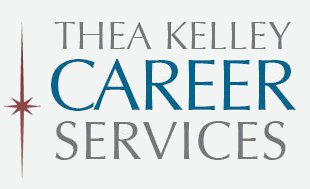 Does the job you’re looking for require attention to detail, or any kind of accuracy? Then you need an error-free resume. And do you really know how to proofread your resume so well that zero errors remain?
Does the job you’re looking for require attention to detail, or any kind of accuracy? Then you need an error-free resume. And do you really know how to proofread your resume so well that zero errors remain?
Employers receive multiple resumes for every posted job, often more than a hundred. Rejecting the ones with mistakes is an easy way to narrow the field. And in my experience, most of us make more errors in our writing than we realize.
Here’s how to ensure your resume is faultless.
Know what to look for when proofreading your resume.
You know you should look for misspellings, but other types of mistakes aren’t so obvious. You also need to check for the following matters of language mechanics:
- Punctuation: Most of us misuse slashes (they stand for “or,” not “and”), dashes (there are three different kinds!) and apostrophes. You also need to check your use of commas (my copy of The Gregg Reference Manual has 23 pages about commas). And if you think bullet items shouldn’t end with a period, you’re wrong. Most of the bullet items in your resume are probably sentences, even if the sentence starts with a verb and the subject (“I,” in most cases) is only implied. So put a period at the end.
- Capitalization: Resumes are often rife with capitalization of words that should not be capitalized (e.g., “provided training for Managers”). And what about tools (mySQL or MySQL?) and websites (Youtube or YouTube?).
- Grammar: When should you use “which,” as opposed to “that”? And so on. (And yes, it’s okay to start a sentence with “And,” when writing in a conversational tone, as in this blog post.)
- Word usage: Using “your” when you meant “you’re” is an error in word usage. Using the present tense in describing a past job is another common usage error.
- Formatting of numbers: Should two million dollars be written in a resume as $2 million, $2MM or $2M? All three are commonly used, but $2M can also mean two thousand dollars, so I don’t recommend that.
Are you seeing cross-eyed yet? I apologize, but that was my intention.
My main purpose in the section above was to show that proofreading is much more difficult than most people realize. For the vast majority of job seekers, my advice is to hire a qualified proofreader. The cost is trivial compared to the benefit. I often hire a proofreader myself (despite my background as an editor) and typically pay less than $10 per page.
What if you target your resume for every opening? If you only change a word or two, you might be able to get away with proofreading it yourself, but otherwise it’s risky. If you’re sending out so many targeted resumes that you can’t afford to have them all proofread, you may be spending too much time focusing on openings instead of organizations.
If your resume was written by a professional, does it still need proofreading? I’m sorry to say this, but yes. I’ve read many professionally written resumes, and almost half of them contained errors that a professional proofreader would have caught. Often those errors were obvious, such as “manger” instead of “manager.” This doesn’t necessarily reflect a lack of skill; it may be that the job seeker had looked at their resume so many times, they were no longer really seeing the details.
You can easily find proofreaders on sites like Upwork and Fiverr, but check the proofreader’s credentials. Look them up on LinkedIn. Where did they go to school? What did they study? How long have they been proofreading? Have they worked as an editor (which doesn’t prove they proofread well, but it’s a clue)? Spend a few minutes on due diligence.
How to proofread your resume if you still don’t want to hire a professional (and maybe even if you do, because nobody is perfect):
- Don’t rely on ChatGPT. At this writing in June 2024, I’ve found that ChatGPT is not a good proofreader. I tried it and found that it missed obvious errors such as a repeated word (“any any”) and grammatical problems.
- Know where to look things up, and do so. Use websites like Grammarly and Webster’s dictionary, and/or buy a good style manual like The Gregg Reference Manual or the Associated Press Style Guide. The Chicago Manual of Style is also good, but the AP style guide may be more appropriate for resumes, since it’s intended for the more terse writing style used in periodicals as opposed to books.
- Take a break between writing and proofreading. Wait overnight if possible, so that you see the document afresh.
- Print the document and proofread on paper. You’ll notice details you didn’t see on the computer screen.
- Know your own typical mistakes. Make a list of them, and check for those.
- Check for one type of mistake at a time.
- Try starting with the last sentence of the document, then move backward up the resume. Ignore the meaning of what you wrote. Proofreading requires a very granular focus. Putting a ruler under the line you’re reading can help.
- Use a spell-checking tool, but you must also check spelling manually. Spell-checkers are notorious for making mistakes. My spell-checker doesn’t notice the problem with “pubic relations professional.”
So, my advice on how to proofread your resume is: hire a proofreader if you can, and if not, make sure you use the best practices. Let your resume demonstrate that you’ll deliver flawless work on the job, then get ready to hear from recruiters. (This post was originally published in 2021 and has been updated.)

